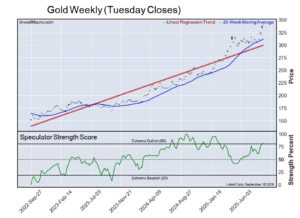Key insights from the week that was.
The July Westpac-MI Consumer Sentiment Survey confirmed that households remain downbeat, with the headline index falling 1.1% to 82.7. The latest update continues to speak to a challenging context, characterised by a resurgence in anxiety over inflation and fears over further interest rate increases. Indeed, Westpac-MI Mortgage Rate Expectations have staged a cumulative 30% bounce over the past three months alone, representing the sharpest ‘hawkish’ turn in the past seven years. Against that backdrop, it is hardly surprising that households’ views on their financial position soured in the month, the sub-index tracking ‘family finances vs a year ago’ and ‘family finances next 12 months’ declining 8.4% and 4.5% respectively in July.
Consumers’ unemployment expectations fell 3.3% in July, returning back to the long-run average after having begun to tick higher over recent months. This is consistent with a softening in labour market conditions rather than a sharp rise in job losses, as has broadly been the case for much of the past year. Given that the unemployment rate remains fairly close to its lows, one might speculate that the labour market remains just as tight as it was last year. Earlier this week, Chief Economist Luci Ellis instead highlighted that labour market tightness can ease significantly without necessitating a corresponding large rise in unemployment. In today’s essay, Chief Economist Luci Ellis explores the importance of identifying the underlying drivers and appropriate response to such dynamics.
Other data received this week was in line with our views. Growth in Australian housing finance approvals caught its breath in May, posting a broad-based decline of –1.7% in the month after having experienced an 11.6% surge over the past three months. With some of the steam coming out of housing market – both with respect to prices and turnover – a more moderate pace of firming heading into next year looks more likely. Meanwhile, the latest NAB business survey provided a downbeat update on business conditions, underscored by a persistent weakening in forward orders and a slowdown in hiring. For policy, it was constructive to see gauges of prices and costs ease following May’s bounce however, the onus ultimately lies on official inflation data to assess disinflation’s current pace.
In the US, the headline CPI fell –0.1% in June, bringing annual headline inflation down from 3.3%yr to 3.0%yr. Meanwhile, core inflation rose just 0.1% in the month and at 3.3%yr, it remains slightly above the headline measure. The detail showcased a decline in core goods prices (–0.1%) and a marginal 0.1% lift in core services prices, much lower compared to the six-month average of 0.4%. Deceleration in the shelter component was key to the latter, as both rent and owners’ equivalent rent components eased. This is consistent with other timely measures on rents which are showing weaker rental growth in new leases signed. The result provides the ‘greater confidence’ that FOMC Chair Powell alluded to in his recent hearings.
During his semi-annual testimony to Congress this week, Powell’s comments hinted that the FOMC may be more open to rate cuts in the near future. Powell characterised the labour market as ‘fully back into balance’ compared to ‘moving into better balance’ last month, reflecting an updated assessment following recent labour market data. Better still, he remarked that the labour market was ‘not a source of broad inflationary pressure for the economy’. Alongside the risks of elevated inflation, he emphasised the risks of reducing policy ‘too late or too little’. That the risk of moving too slowly is being actively considered suggests the Committee is more biased towards moving than not.
Overall, this week’s data and commentary further supports our view that the FOMC will begin rate cuts in September and pursue at a measured pace of one rate cut per quarter until June 2026. Before then, we will get a couple more inflation readings which is likely to help bolster the FOMC’s confidence. The July meeting and the sentiment during the Jackson Hole symposium in late August should provide a clearer signal of willingness to cut rates.
Meanwhile, the Bank of Korea (BoK) also noted this week that they will ‘examine the timing of a rate cut’. The BoK was the first central bank in Asia to raise rates in 2021, finishing its hiking cycle a year and a half ago. Core inflation in South Korea was at the 2.0% target in May and June while headline has been easing, currently at 2.4%yr. Korea is similar to most of Asia, where inflation is at, or very close, to central bank targets. However, most are hesitant to move before the FOMC at risk of devaluing their currencies and potentially introducing imported inflation. This leaves many policymakers buying time before cutting, even as domestic conditions necessitate easing monetary policy settings.
In China, consumer prices undershot expectations rising 0.2%yr while producer prices fell –0.8%yr. While some of the downward pressure on consumer prices in the month were a result of discounting for various household contents and automobiles during the “618” shopping festival, the underlying picture of slow consumer demand remains. The more benign fall in producer prices compared to history reflects an increase in energy and commodity prices in recent months. However, excess capacity in the economy will continue to be a disinflationary force looking ahead.
Finally in the UK, GDP grew 0.4% in May, adding to the cumulative 1.5% increase in GDP since December 2023. Much of this was supported by the 0.7% growth in consumer-facing services, no doubt a result of robust real wages growth. As BoE policymakers focus on bringing sticky services inflation down, this result suggests they can be patient if needed in normalising policy.









